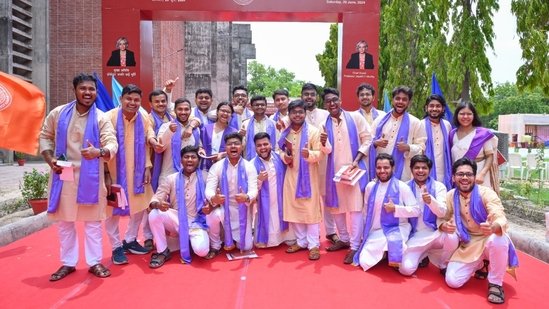Over the past few years, India has been witnessing a significant shift in its graduation traditions. The once-ubiquitous black cap and gown, borrowed from Western academic customs, are gradually being replaced by traditional Indian attire for convocation ceremonies. This change in dress code, sparked by a 2015 directive from the University Grants Commission (UGC), is part of a broader cultural movement to reclaim India’s heritage and promote pride in local traditions. But how has this shift played out in practice, and what does it mean for the future of academic dress codes in India? Indian universities like IIT, IIM ditch colonial caps and gowns
Indian universities like IIT, IIM ditch colonial caps and gowns
In July 2015, the UGC issued a directive that sent ripples through universities across India. The letter, in alignment with Prime Minister Modi’s Make in India initiative, called for a departure from Western gowns and caps at convocations in favour of traditional Indian attire. The advisory emphasized the importance of preserving the country’s heritage and suggested the use of handloom fabrics for ceremonial dresses, aligning with efforts to revive the handloom sector and improve the livelihoods of weavers. Moreover, the UGC argued that such attire would be more suitable for India’s hot and humid weather conditions, offering both comfort and cultural relevance. The advisory was reissued in 2019 and then in 2024.
Myanmar Earthquake Live: Read the real-time updates and Impact!
The impact of the shift
As of 2024, the movement to phase out Western-style gowns is well underway. According to a report by The Indian Express, approximately 76% of Indian universities have now adopted traditional attire for their convocation ceremonies. Among the prestigious Indian Institutes of Technology (IITs), 22 out of 23 have embraced Indian clothing for graduations, with only IIT-Delhi continuing to follow the colonial-era dress code. Similarly, of the 21 Indian Institutes of Management (IIMs), 14 have abandoned traditional gowns, though some have opted for Western-style formal attire with a stole instead of Indian garments.
how indian fashion can the the entire industries

